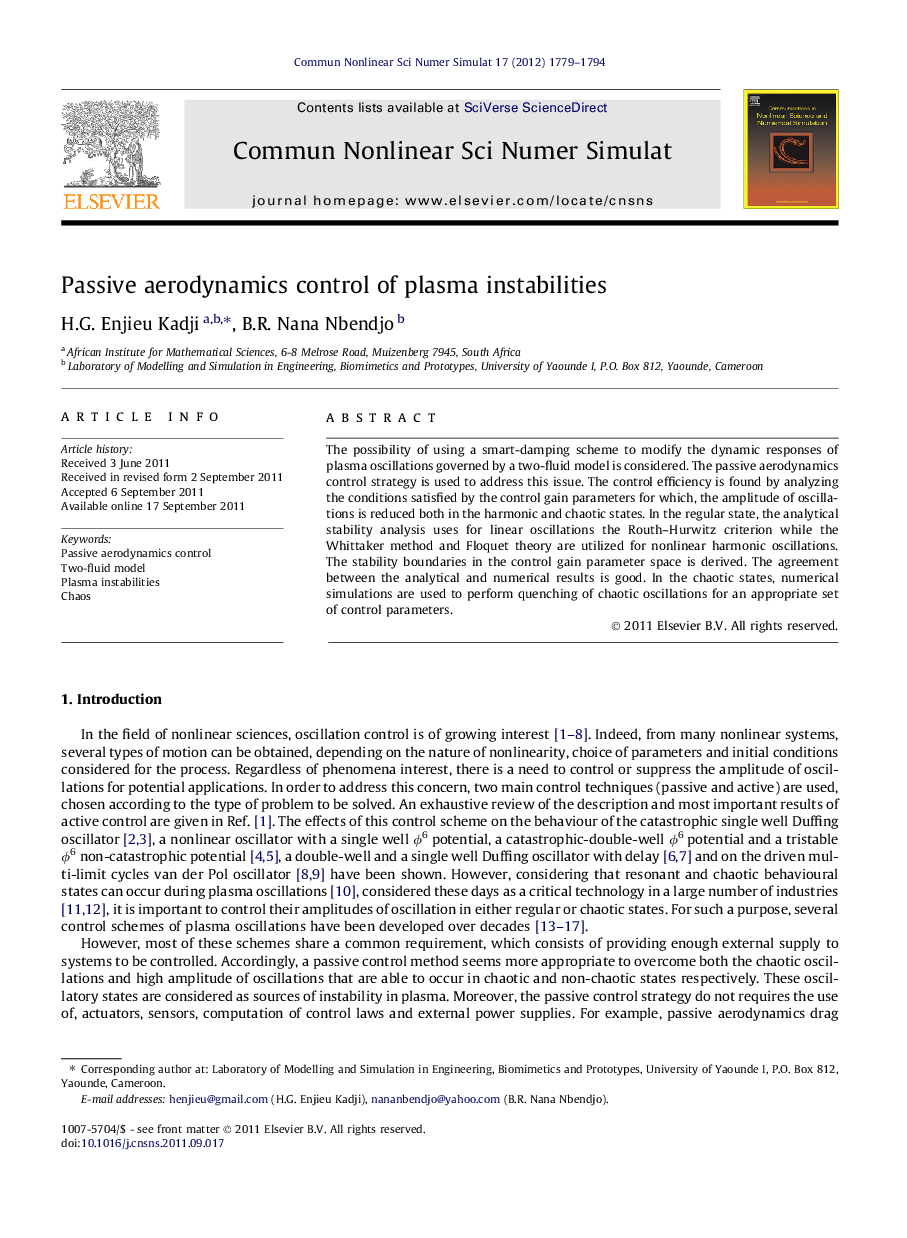| Article ID | Journal | Published Year | Pages | File Type |
|---|---|---|---|---|
| 767131 | Communications in Nonlinear Science and Numerical Simulation | 2012 | 16 Pages |
The possibility of using a smart-damping scheme to modify the dynamic responses of plasma oscillations governed by a two-fluid model is considered. The passive aerodynamics control strategy is used to address this issue. The control efficiency is found by analyzing the conditions satisfied by the control gain parameters for which, the amplitude of oscillations is reduced both in the harmonic and chaotic states. In the regular state, the analytical stability analysis uses for linear oscillations the Routh–Hurwitz criterion while the Whittaker method and Floquet theory are utilized for nonlinear harmonic oscillations. The stability boundaries in the control gain parameter space is derived. The agreement between the analytical and numerical results is good. In the chaotic states, numerical simulations are used to perform quenching of chaotic oscillations for an appropriate set of control parameters.
► A smart-damping scheme is used to passively control the dynamic responses of plasma oscillations governed by a two-fluid model. ► For linear oscillations, the stability boundaries are determined based upon the Routh-Hurwitz criterion while the Whittaker method and Floquet theory enable to predict boundaries of unstable states. ► Two directions of flow speed control are considered and results of analytical predictions are validated and complemented by numerical simulations. ► In the direction of negative flow speed, the process of passive aerodynamics control is optimal and requires less energy to be achieved. ► Quenching of the hysteresis phenomenon, jump in amplitude of harmonic oscillations, chaotic and hyperchaotic states are successfully realized via this coupling scheme.
